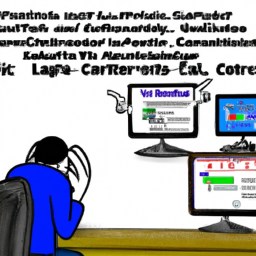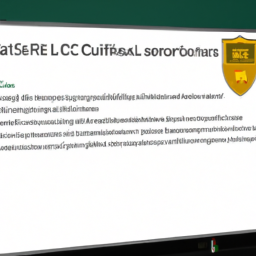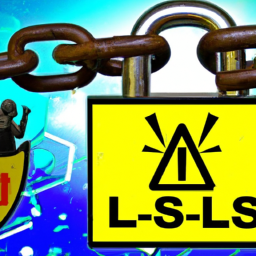Are you tired of your servers crashing, causing costly downtime and frustrating your users? Look no further! Load balancing is the secret weapon you need to minimize server downtime and keep your systems running smoothly.
Like a skilled conductor leading an orchestra, load balancing orchestrates the flow of traffic to multiple servers, ensuring that no single server becomes overwhelmed and crashes.
In this article, we will delve into the intricacies of load balancing, explaining the benefits, algorithms, and techniques involved. Learn how to implement load balancing in your infrastructure and optimize its performance to achieve maximum efficiency.
Through real-life case studies of successful load balancing implementations, you will gain valuable insights and inspiration for your own server management. Don’t let server downtime bring you down – master the art of load balancing and keep your systems humming!
Key Takeaways
- Load balancing is a crucial mechanism for minimizing server downtime and keeping systems running smoothly.
- Different types of load balancing, such as round-robin, least connections, and IP hash, help distribute incoming network traffic across multiple servers.
- Load balancing algorithms like round robin, weighted round robin, and least connection enhance server performance and improve the user experience.
- Implementing load balancing involves distributing workloads, monitoring server health, scaling horizontally, implementing failover mechanisms, and updating configurations.
Understanding the Basics of Load Balancing
You’ll love learning about the basics of load balancing and how it helps minimize server downtime!
Load balancing is a crucial aspect of server management that distributes incoming network traffic across multiple servers to optimize resource utilization and ensure high availability.
There are different types of load balancing, such as round-robin, least connections, and IP hash, each serving a specific purpose based on the network architecture.
To implement load balancing effectively, it’s essential to follow best practices, such as monitoring server health, scaling resources as needed, and configuring load balancers for redundancy.
These practices help ensure that the load balancer operates efficiently and avoids becoming a single point of failure.
Understanding load balancing types and adopting best practices can significantly enhance server performance and minimize downtime, leading to improved user experience and increased productivity.
Now, let’s explore the benefits of load balancing in server management.
Benefits of Load Balancing in Server Management
By implementing load balancing, server management becomes a breeze, offering an incredible boost in efficiency and virtually eliminating any server hiccups. Load balancing strategies play a crucial role in ensuring the smooth operation of servers by distributing incoming network traffic evenly across multiple servers.
This prevents any single server from becoming overwhelmed and minimizes the risk of downtime. Load balancing best practices involve considering factors such as server capacity, response time, and network traffic patterns to optimize the distribution of workload.
With load balancing in place, servers can handle increased traffic and maintain high availability, as the workload is intelligently distributed. This not only enhances the user experience but also improves the overall performance of the system.
As we delve into load balancing algorithms and techniques, we will explore how these strategies are implemented to achieve seamless server management.
Load Balancing Algorithms and Techniques
Implementing load balancing algorithms and techniques allows for the efficient distribution of network traffic, ensuring optimal server management and enhancing overall system performance. Load balancing strategies for distributed systems involve various algorithms and techniques, each with its own advantages and challenges.
Round Robin is a commonly used algorithm that evenly distributes traffic among servers in a cyclic manner. Weighted Round Robin assigns a weight to each server based on its capabilities, allowing for a more balanced distribution. Least Connection algorithm directs traffic to the server with the fewest active connections, minimizing response time.
However, load balancing challenges in cloud environments include dynamic and unpredictable workloads, scalability, and ensuring data consistency. By understanding these load balancing strategies and challenges, you can implement the most suitable techniques to minimize server downtime and improve your infrastructure’s performance.
Implementing Load Balancing in Your Infrastructure
Ironically, ensuring a smoothly functioning infrastructure becomes a piece of cake once load balancing is seamlessly integrated. Load balancing best practices play a crucial role in implementing a robust and efficient infrastructure. Here are five essential techniques to consider:
-
Distributing workloads evenly across servers: Load balancing algorithms, such as round robin or least connections, ensure that no single server is overwhelmed with requests.
-
Monitoring server health: Regularly checking server metrics like CPU usage, memory utilization, and response times helps identify potential bottlenecks and allows for proactive management.
-
Scaling horizontally: Adding more servers to the infrastructure as demand increases ensures that the workload remains evenly distributed and prevents overloading.
-
Implementing failover mechanisms: Configuring backup servers and implementing automatic failover guarantees uninterrupted service in case of server failures.
-
Regularly reviewing and updating load balancing configurations: As the infrastructure evolves, it’s essential to reassess and adjust load balancing settings to optimize performance and address new challenges.
By effectively implementing these load balancing techniques, you can minimize server downtime and maximize infrastructure efficiency.
Transitioning into the subsequent section about ‘monitoring and optimizing load balancing performance’, it’s crucial to continuously evaluate the effectiveness of these practices to ensure optimal performance.
Monitoring and Optimizing Load Balancing Performance
To ensure optimal performance, you need to continuously monitor and optimize the load balancing in your infrastructure. Monitoring load balancing metrics is crucial for identifying any bottlenecks or issues that may affect the performance of your servers. Some important metrics to track include server response time, throughput, and error rates. By monitoring these metrics, you can quickly identify any performance degradation and take necessary actions to rectify the situation. Load balancing best practices should also be followed to optimize performance. These include distributing the load evenly across servers, using health checks to identify and remove unhealthy servers from the rotation, and adjusting load balancing algorithms based on traffic patterns. By following these practices and continuously monitoring and optimizing load balancing performance, you can minimize server downtime and ensure a seamless user experience.
Now let’s delve into some case studies of successful load balancing implementations.
Case Studies: Successful Load Balancing Implementations
In real-world scenarios, businesses have achieved remarkable results through successful load balancing implementations. Scalability challenges often arise when businesses experience an increase in traffic or demand for their services. Load balancing best practices can play a crucial role in addressing these challenges and minimizing server downtime.
One successful implementation involved the use of a load balancing algorithm that distributed incoming traffic evenly across multiple servers. This not only improved response times but also ensured that no single server was overwhelmed with excessive requests.
Additionally, the implementation included regular monitoring of server performance and load distribution to identify and address any bottlenecks or issues. By following load balancing best practices, businesses can effectively optimize their server infrastructure, enhance scalability, and ensure high availability of their services.
Frequently Asked Questions
How much does load balancing software typically cost?
Load balancing software pricing comparison is an essential step in selecting the right software for your needs. Factors to consider include the type of load balancing algorithm, the number of servers and virtual machines, and the level of support provided.
Pricing varies depending on the vendor and the features offered. On average, load balancing software can cost anywhere from a few hundred dollars to several thousand dollars. It’s crucial to evaluate the cost in relation to the benefits and scalability provided by the software.
What are some common challenges or limitations of load balancing?
Common challenges in load balancing include scalability management and network congestion control.
Scalability management involves ensuring that the load balancing system can handle increasing traffic and growing server infrastructure. Insufficient scalability management can result in overloaded servers, leading to downtime and poor performance.
Network congestion control is crucial to prevent bottlenecks and ensure smooth data transmission. Inadequate network congestion control can cause delays and packet loss, affecting user experience.
Proper load balancing techniques address these challenges to optimize server performance and minimize downtime.
Can load balancing help improve website security?
Load balancing plays a crucial role in improving website security. By distributing incoming traffic across multiple servers, load balancing helps prevent overloading and potential attacks on a single server. It also ensures high availability and uptime by redirecting requests to servers with the least load.
Load balancing techniques, such as round-robin and weighted distribution, enhance server reliability and minimize the risk of downtime. Ultimately, load balancing enhances the overall security and performance of a website.
Are there specific industries or types of websites that benefit most from load balancing?
In the world of load balancing, certain industries or types of websites reap substantial benefits. E-commerce websites, for instance, thrive on load balancing algorithms such as round-robin and least connection.
These algorithms distribute traffic evenly across multiple servers, ensuring optimal performance and mitigating the risk of server overload. By efficiently managing server resources, load balancing optimizes website availability, scalability, and responsiveness, resulting in enhanced user experience and increased customer satisfaction.
How does load balancing affect the overall performance and speed of a server?
Load balancing plays a crucial role in improving server scalability and enhancing the overall performance and speed. By distributing incoming network traffic evenly across multiple servers, load balancing prevents any single server from becoming overwhelmed, thereby reducing latency and improving response times.
This results in a smoother user experience as the impact of heavy traffic is mitigated and server resources are efficiently utilized. Load balancing ensures that server capacity is maximized and user requests are processed quickly and reliably.
Conclusion
In conclusion, load balancing plays a pivotal role in preventing server downtime. By evenly distributing incoming network traffic across multiple servers, load balancing ensures optimal performance and reliability.
The benefits are manifold, including improved response times, enhanced scalability, and better resource utilization. Implementing load balancing techniques, such as round-robin or least connections, can further optimize server management.
Monitoring and optimizing load balancing performance are crucial to ensuring its effectiveness. Overall, load balancing proves to be a powerful tool in minimizing server downtime and maximizing efficiency in your infrastructure.
















































































































